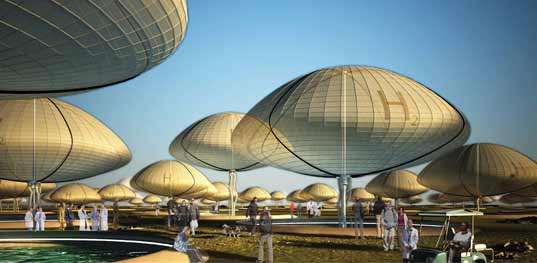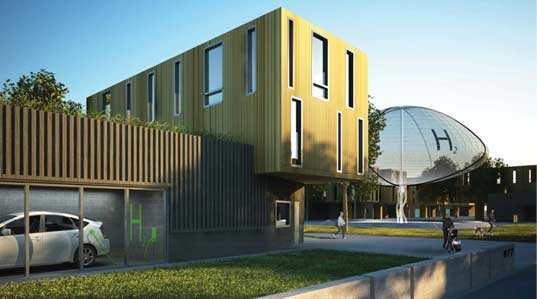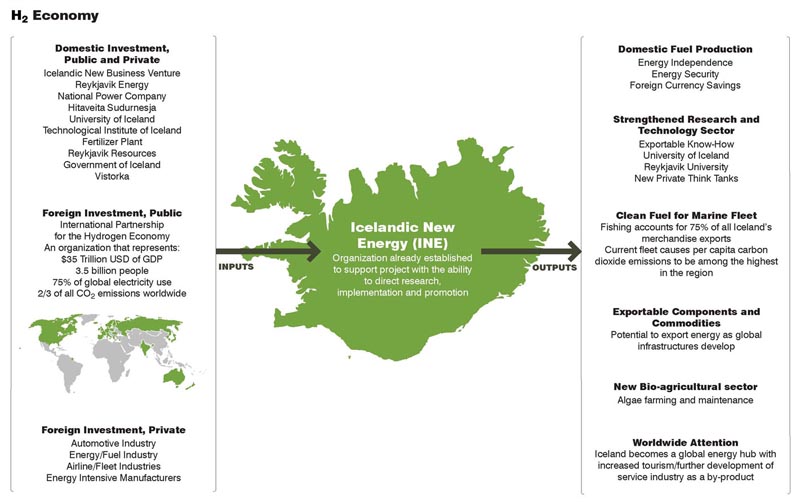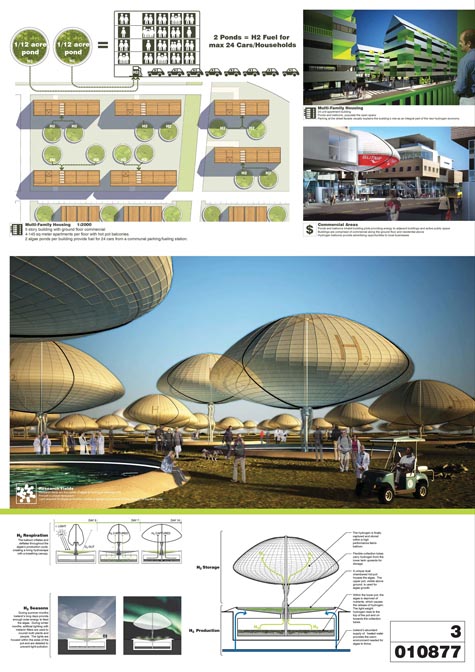 [Image: Algae balloon communities in Iceland by the Philadelphia-based 202 Collaborative].
[Image: Algae balloon communities in Iceland by the Philadelphia-based 202 Collaborative].A few years ago I audited a course about Archigram at the University of Pennsylvania, just something to do on a Wednesday morning before I went to work – but one of the things that indirectly came out of that experience was BLDGBLOG. It's interesting to note, then, that one of the other people in that class now writes Brand Avenue; another's work was featured here on BLDGBLOG last year; and, this morning, another course attendee emailed to point out a proposal that he's helped assemble and conceptualize, about hydrogen-powered urban design in Iceland.
 [Image: Algae balloons and the houses they serve, by the 202 Collaborative].
[Image: Algae balloons and the houses they serve, by the 202 Collaborative].That project, originally intended for a design competition, imagines carefully engineered algae ponds and balloons of hydrogen gas fueling the Icelandic city of the future.
It's Icelandic New Energy (INE).
 [Image: An Icelandic hydrogen economy, outlined by the 202 Collaborative; view larger].
[Image: An Icelandic hydrogen economy, outlined by the 202 Collaborative; view larger].As the designers note:
- It has long been known that algae produce small amounts of hydrogen as a byproduct of photosynthesis. In 1999, researchers in Berkeley observed that algae alternate between hydrogen production and normal photosynthesis depending on the chemical environment. Depriving algae of oxygen and sulfur, the researchers greatly increased the hydrogen production and triggered the algae to produce hydrogen for an extended period of time. Another research group also discovered that algae will sustain simultaneous production of hydrogen and oxygen from water by illuminating the algae and depriving it of carbon dioxide and oxygen. Researchers estimate that a small pond (1.5 acre or 10 meter diameter) will produce enough hydrogen on a weekly basis to fuel 12 cars.
 [Image: 202 Collaborative].
[Image: 202 Collaborative].However, referring to things beyond the scope of this project, a part of me does find it a bit depressing that we'll go to all these lengths – we'll totally redesign the industrial base of society – only to jump back into our Escalades and drive out to buy organic cotton Christmas mittens at the local Baby Gap.
It seems like an awfully long distance to go to get nowhere, in other words. After all of this, we'll do the exact same things, outshopping one another on greengoods.com and parking our solar-powered sustainable sports cars somewhere in that sprawling tangle of garages and freeways that we never disassembled out back.
Everything will be recycled, yet everything will be the same.
We'll watch internet sitcoms and judge each other's social value by the hemp dresses that our girlfriends wear.
In any case, that's a pet peeve of mine that deals with things well outside of the project featured here.
 [Image: A broader view of the plan by the 202 Collaborative; view much larger].
[Image: A broader view of the plan by the 202 Collaborative; view much larger].These renderings are gorgeous, meanwhile, and they lead me to wonder what Archigram would be doing today, if they had grown up designing in a world powered by alternative fuels. What strange new worlds of hydrogen balloons and algae ponds extending off past the urban horizon might we then see?
Crops harvested from the roofs of brick tenements in north Philly. Steel frameworks of solar concentration arrays visible in the cracks between buildings as we step over bio-boulevards and water filtration systems on our way to work.
Vast harddrives made entirely from milled crystal move glass elevators floor by floor through the environment ministry, carrying cloned medicinal plant samples up to their examination chambers...
All narratives of the future are fair game when you're talking about architectural design.
Anywho, although their site is still under construction, be sure to stop by the homepage of the 202 Collaborative.
(Thanks, Patrick!)
No comments:
Post a Comment